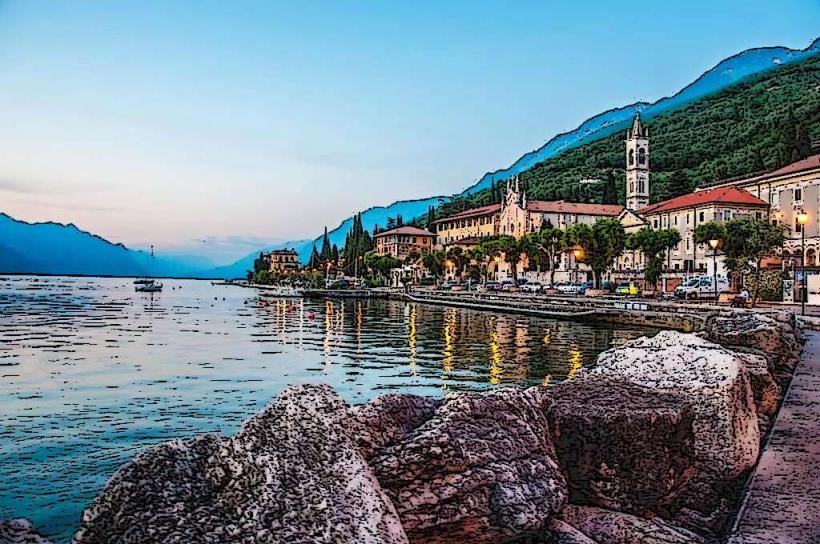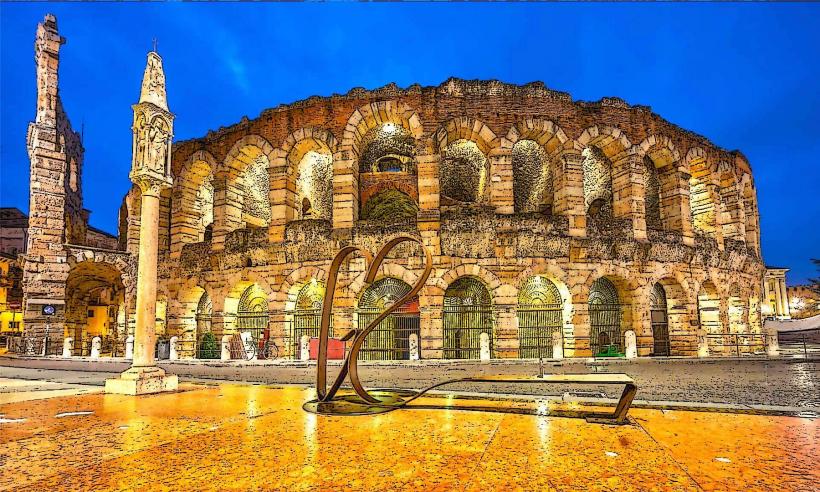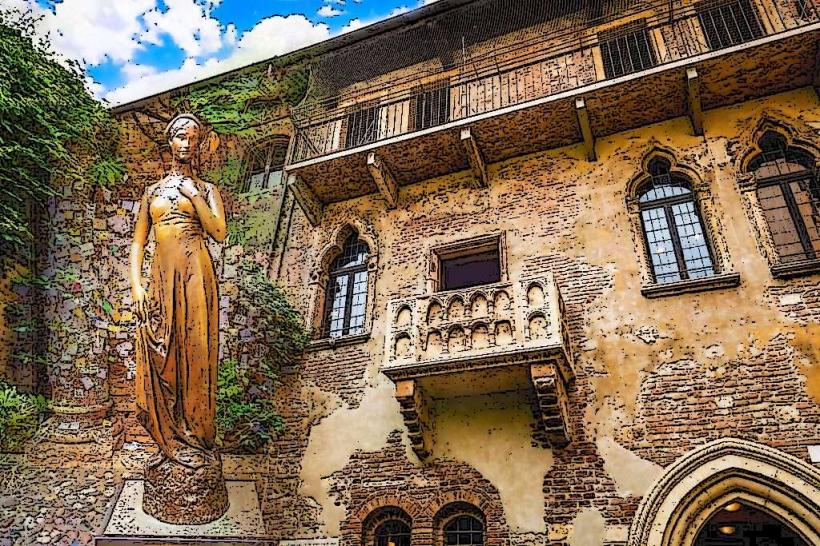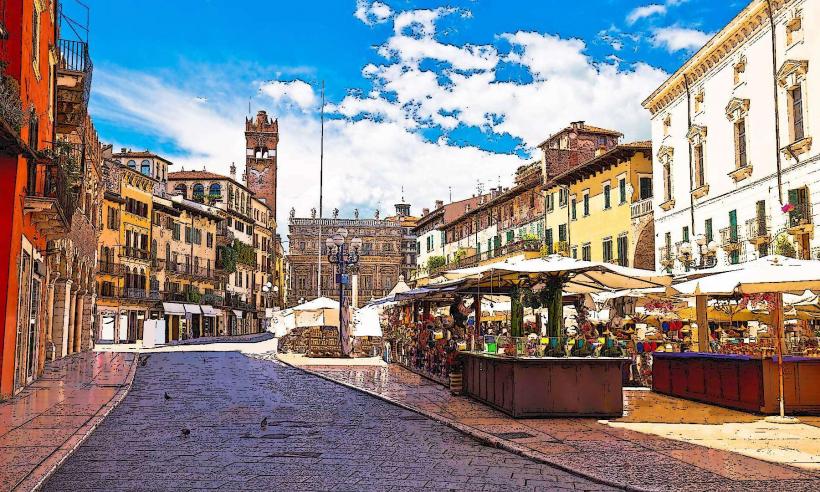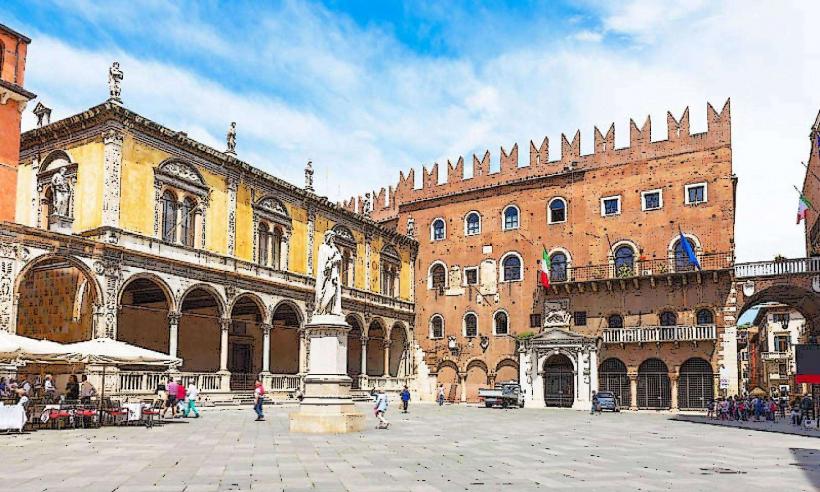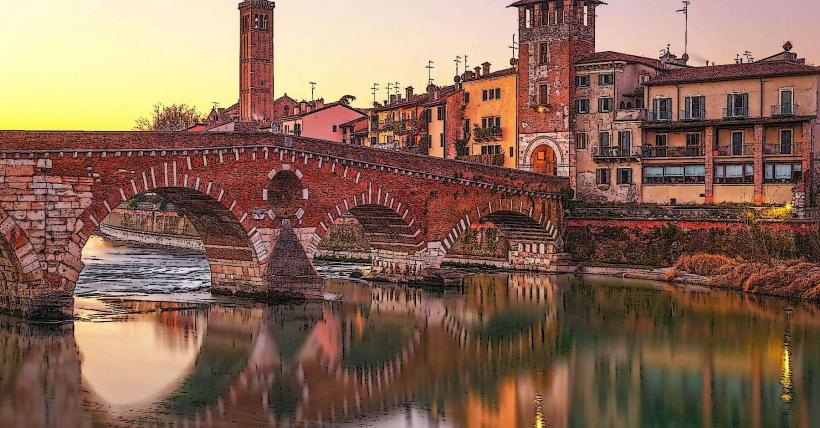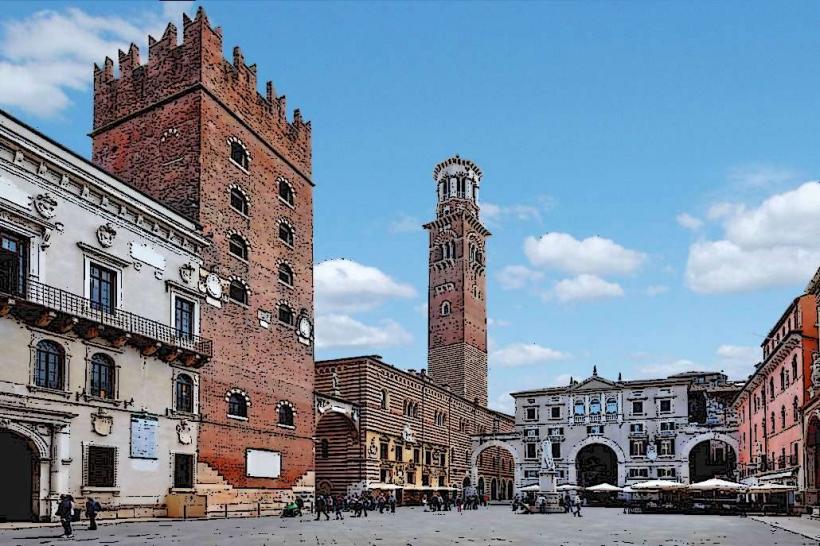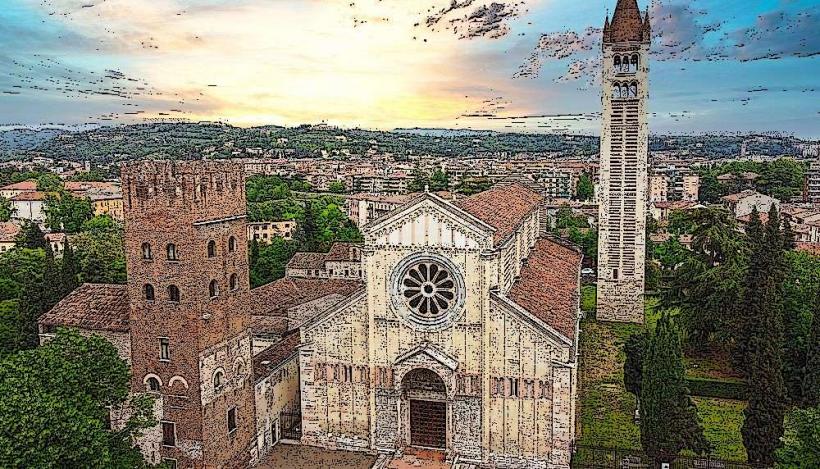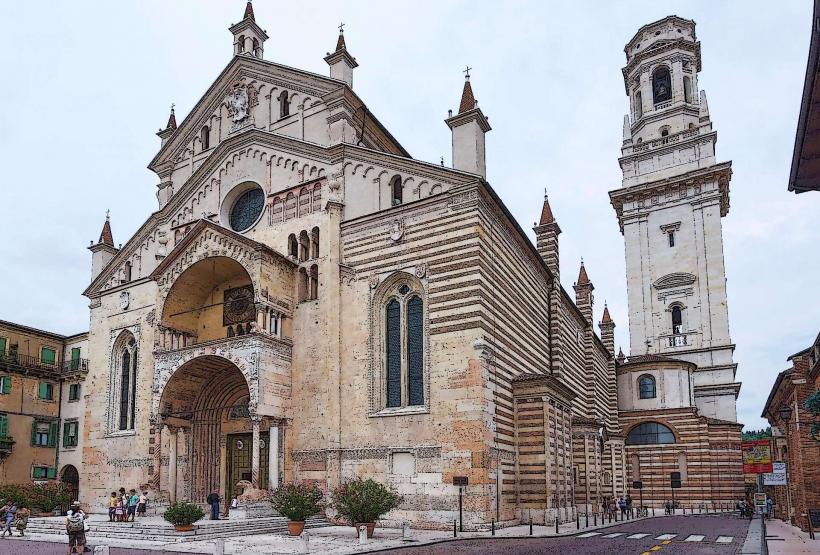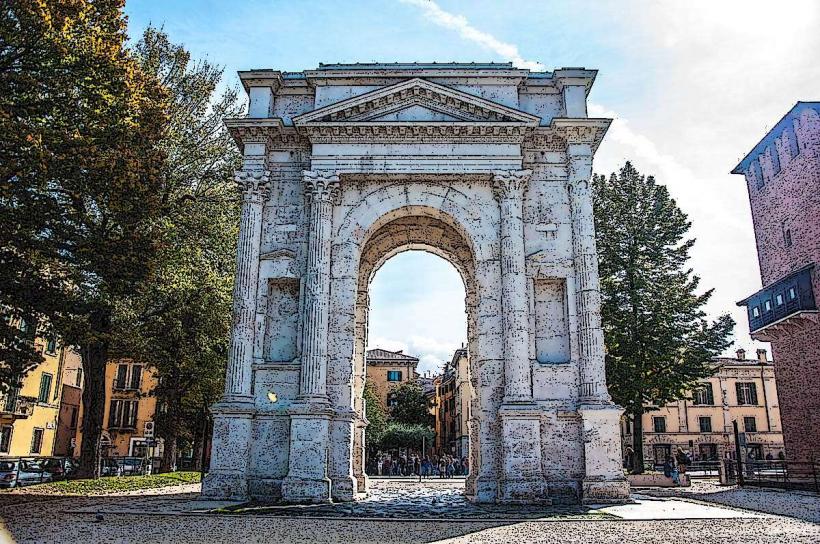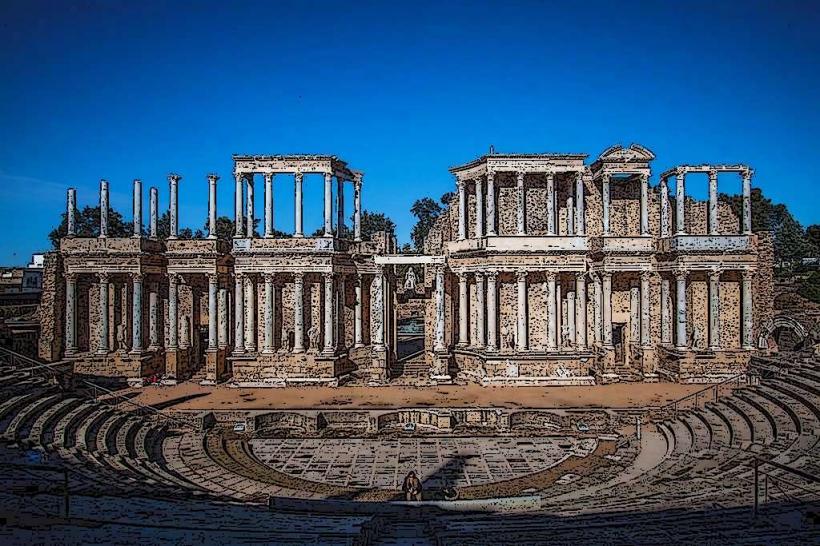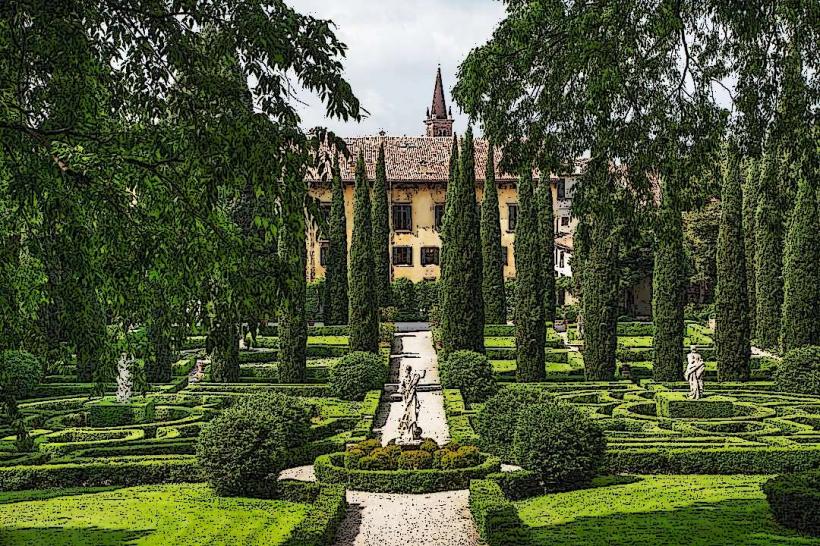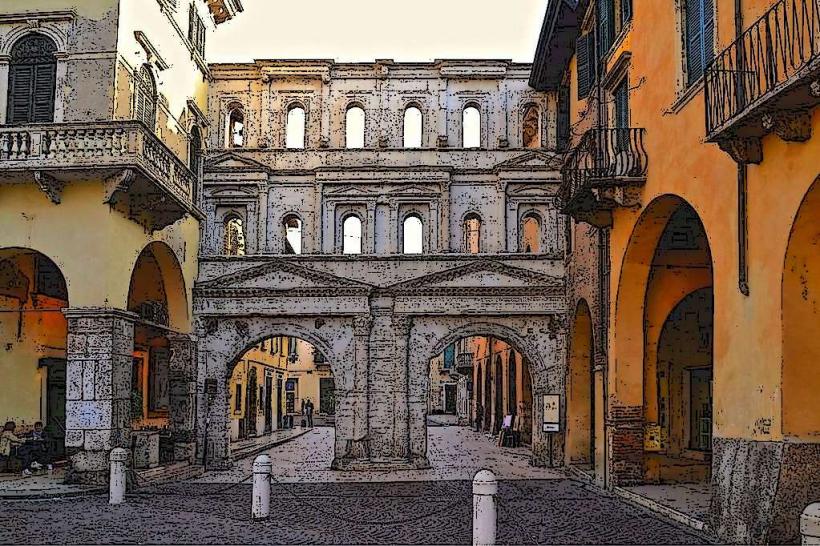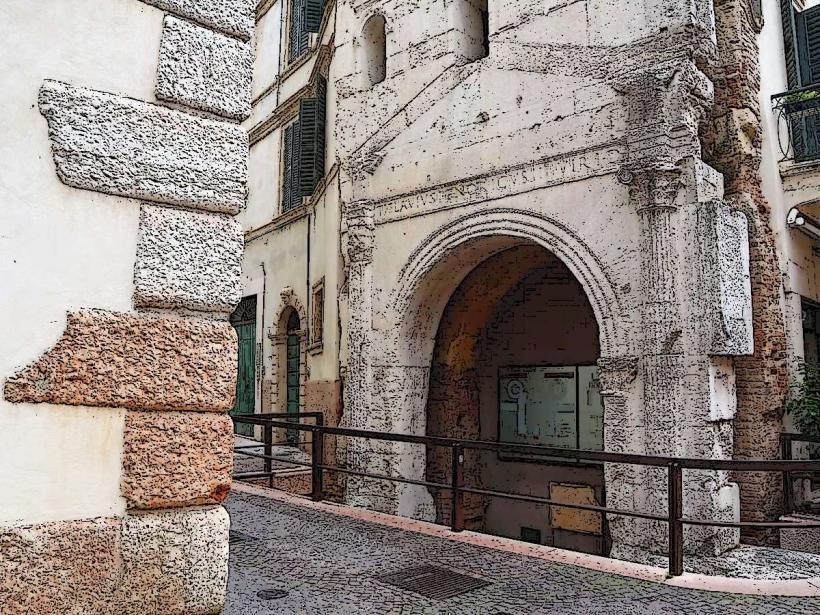Information
Landmark: CastelvecchioCity: Verona
Country: Italy
Continent: Europe
Castelvecchio, meaning "Old Castle," is one of Verona’s most iconic landmarks and a prime example of medieval military architecture in Italy. Built by the powerful Della Scala family (Scaligeri) in the 14th century, it served as a fortress to defend the city and as a residence for its rulers. Today, Castelvecchio houses the Museo di Castelvecchio, which displays a vast collection of art, sculptures, and historical artifacts.
1. Historical Background
- Built by Cangrande II della Scala: The castle was constructed between 1354 and 1376 under the rule of Cangrande II della Scala, one of the most influential members of the Scaligeri family. Cangrande II intended the castle as both a defensive fortress and a symbol of his family’s power.
- Fortress and Escape Route: Castelvecchio was strategically located along the Adige River, which provided a natural defense, and near the Roman bridge that connected the castle to the countryside, allowing the Scaligeri a potential escape route in times of conflict.
- Changes over Centuries: After Verona fell to the Venetians and later to Napoleonic forces, Castelvecchio underwent various modifications. It was converted into a barracks under Austrian rule, and in the 20th century, it was transformed into a museum by architect Carlo Scarpa, who revitalized the space with modern renovations.
2. Architecture and Design
- Medieval Fortifications: Castelvecchio’s design reflects the needs of medieval defense with its high crenellated walls, defensive towers, and a large keep. The moat and drawbridge enhanced its protective features, making it a formidable stronghold.
- Scaliger Bridge (Ponte Scaligero): The castle is connected to the Ponte Scaligero, an impressive fortified bridge that spans the Adige River. The bridge, with its distinctive red brick and battlements, is an architectural marvel and a popular spot for visitors due to its scenic views.
- Carlo Scarpa’s Renovation: In the 1950s and 60s, architect Carlo Scarpa transformed Castelvecchio into a modern museum while preserving its medieval elements. Scarpa’s design introduced clean lines, minimalist interiors, and innovative display techniques, blending historical architecture with modern aesthetics.
3. Museo di Castelvecchio (Museum)
- Art Collection: The museum holds an extensive collection of art and historical artifacts from Verona’s history. The exhibits range from medieval sculptures to Renaissance paintings, showcasing works by Veronese artists such as Pisanello, Paolo Veronese, and Giovanni Bellini.
- Sculpture and Decorative Arts: Castelvecchio’s collection includes a wide variety of sculptures, some dating back to Roman times, as well as ceramics, jewelry, and weapons from the Middle Ages.
- Historic Frescoes: The museum preserves frescoes and other medieval artworks, some of which originally adorned Verona’s churches and palaces.
- Room Layout and Presentation: Scarpa’s renovations introduced unique ways to display the art, with suspended paintings and carefully lit sculptures. The museum’s layout allows for a smooth flow between rooms and terraces, offering views of both the exhibits and the castle’s architecture.
4. Features and Highlights
- Courtyard: The castle has a central courtyard with a picturesque blend of medieval and modern design elements. The courtyard features a statue of Cangrande I della Scala, a celebrated member of the Della Scala family, whose equestrian statue was originally located at the Scaliger Tombs.
- Scenic Views from the Towers: Visitors can climb the castle’s towers to enjoy panoramic views of Verona and the Adige River, offering a unique perspective on the city.
- Ponte Scaligero Views: The bridge provides an exceptional vantage point over the river and a closer look at the castle’s architecture.
5. Visitor Information
- Exhibitions and Events: The museum frequently hosts temporary exhibitions, lectures, and cultural events that explore different aspects of art and history.
- Hours and Accessibility: Castelvecchio is open year-round, although hours may vary seasonally. The museum provides accessible routes for visitors with mobility needs.
Castelvecchio stands as both a historical monument and a cultural center, encapsulating Verona’s medieval legacy while offering visitors access to one of Italy’s finest collections of regional art. Its blend of medieval strength and modern design makes it an architectural and artistic gem, well worth exploring for those interested in Verona’s heritage.

